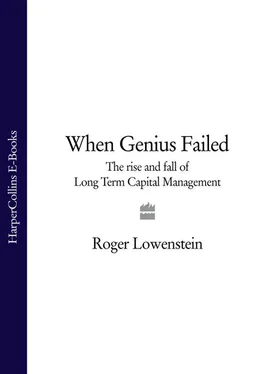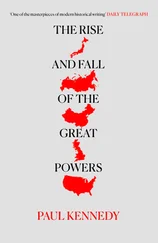Meriwether made his escape from Rosemoor by means of a singular passion: not investing but golf. From an early age, he had haunted the courses at public parks, an unusual pastime for a Rosemoor boy. He was a standout member of the Mendel school team and twice won the Chicago Suburban Catholic League golf tournament. He also caddied at the Flossmoor Country Club, which involved a significant train or bus ride south of the city. The superintendents at Flossmoor took a shine to the earnest, likable young man and let him caddy for the richest players—a lucrative privilege. One of the members tabbed him for a Chick Evans scholarship, named for an early-twentieth-century golfer who had had the happy idea of endowing a college scholarship for caddies. Meriwether picked Northwestern University, in Evanston, Illinois, on the chilly waters of Lake Michigan, twenty-five miles and a world away from Rosemoor. His life story up to then had highlighted two rather conflicting verities. The first was the sense of well-being to be derived from fitting into a group such as a neighborhood or church: from religiously adhering to its values and rites. Order and custom were virtues in themselves. But second, Meriwether had learned, it paid to develop an edge—a low handicap at a game that nobody else on the block even played.
After Northwestern, he taught high school math for a year, then went to the University of Chicago for a business degree, where a grain farmer’s son named Jon Corzine (later Meriwether’s rival on Wall Street) was one of his classmates. Meriwether worked his way through business school as an analyst at CNA Financial Corporation, and graduated in 1973. The next year, Meriwether, now a sturdily built twenty-seven-year-old with beguiling eyes and round, dimpled cheeks, was hired by Salomon. It was still a small firm, but it was in the center of great changes that were convulsing bond markets everywhere.
Until the mid-1960s, bond trading had been a dull sport. An investor bought bonds, often from the trust department of his local bank, for steady income, and as long as the bonds didn’t default, he was generally happy with his purchase, if indeed he gave it any further thought. Few investors actively traded bonds, and the notion of managing a bond portfolio to achieve a higher return than the next guy or, say, to beat a benchmark index, was totally foreign. That was a good thing, because no such index existed. The reigning bond guru was Salomon’s own Sidney Homer, a Harvard-educated classicist, distant relative of the painter Winslow Homer, and son of a Metropolitan Opera soprano. Homer, author of the massive tome A History of Interest Rates: 2000 BC to the Present , was a gentleman scholar—a breed on Wall Street that was shortly to disappear.
Homer’s markets, at least in contrast to those of today, were characterized by fixed relationships: fixed currencies, regulated interest rates, and a fixed gold price ($35 an ounce). But the epidemic of inflation that infected the West in the late 1960s destroyed this cozy world forever. As inflation rose, so did interest rates, and those gilt-edged bonds, bought when a 4 percent rate seemed attractive, lost half their value or more. In 1971, the United States freed the gold price; then the Arabs embargoed oil. If bondholders still harbored any illusion of stability, the bankruptcy of the Penn Central Railroad, which was widely owned by blue-chip accounts, wrecked the illusion forever. Bond investors, most of them knee-deep in losses, were no longer comfortable standing pat. Gradually, governments around the globe were forced to drop their restrictions on interest rates and on currencies. The world of fixed relationships was dead.
Soybeans suddenly seemed quaint; money was the hot commodity now. Futures exchanges devised new contracts in financial goods such as Treasury bills and bonds and Japanese yen, and everywhere there were new instruments, new options, new bonds to trade, just when professional portfolio managers were waking up and wanting to trade them. By the end of the 1970s, firms such as Salomon were slicing and dicing bonds in ways that Homer had never dreamed of: blending mortgages together, for instance, and distilling them into bite-sized, easily chewable securities.
The other big change was the computer. As late as the end of the 1960s, whenever traders wanted to price a bond, they would look it up in a thick blue book. In 1969, Salomon hired a mathematician, Martin Leibowitz, who got Salomon’s first computer. Leibowitz became the most popular mathematician in history, or so it seemed when the bond market was hot and Salomon’s traders, who no longer had time to page through the blue book, crowded around him to get bond prices that they now needed on the double. By the early 1970s, traders had their own crude handheld calculators, which subtly quickened the rhythm of the bond markets.
Meriwether, who joined Salomon on the financing desk, known as the Repo Department, got there just as the bond world was turning topsy-turvy. Once predictable and relatively low risk, the bond world was pulsating with change and opportunity, especially for younger, sharp-eyed analysts. Meriwether, who didn’t know a soul when he arrived in New York, rented a room at a Manhattan athletic club and soon discovered that bonds were made for him. Bonds have a particular appeal to mathematical types because so much of what determines their value is readily quantifiable. Essentially, two factors dictate a bond’s price. One can be gleaned from the coupon on the bond itself. If you can lend money at 10 percent today, you would pay a premium for a bond that yielded 12 percent. How much of a premium? That would depend on the maturity of the bond, the timing of the payments, your outlook (if you have one) for interest rates in the future, plus all manner of wrinkles devised by clever issuers, such as whether the bond is callable, convertible into equity, and so forth.
The other factor is the risk of default. In most cases, that is not strictly quantifiable, nor is it very great. Still, it exists. General Electric is a good risk, but not as good as Uncle Sam. Hewlett-Packard is somewhat riskier than GE; Amazon.com, riskier still. Therefore, bond investors demand a higher interest rate when they lend to Amazon as compared with GE, or to Bolivia as compared with France. Deciding how much higher is the heart of bond trading, but the point is that bonds trade on a mathematical spread. The riskier the bond, the wider the spread—that is, the greater the difference between the yield on it and the yield on (virtually risk free) Treasurys. Generally, though not always, the spread also increases with time—that is, investors demand a slightly higher yield on a two-year note than on a thirty-day bill because the uncertainty is greater.
These rules are the catechism of bond trading; they ordain a vast matrix of yields and spreads on debt securities throughout the world. They are as intricate and immutable as the rules of a great religion, and it is no wonder that Meriwether, who kept rosary beads and prayer cards in his briefcase, found them satisfying. Eager to learn, he peppered his bosses with questions like a divinity student. Sensing his promise, the suits at Salomon put him to trading government agency bonds. Soon after, New York City nearly defaulted, and the spreads on various agency bonds soared. Meriwether reckoned that the market had goofed—surely, not every government entity was about to go bust—and he bought all the bonds he could. Spreads did contract, and Meriwether’s trades made millions. 3
The Arbitrage Group, which he formed in 1977, marked a subtle but important shift in Salomon’s evolution. It was also the model that Long-Term Capital was to replicate, brick for brick, in the 1990s—a laboratory in which Meriwether would become accustomed to, and comfortable with, taking big risks. Although Salomon had always traded bonds, its primary focus had been the relatively safer business of buying and selling bonds for customers. But the Arbitrage Group, led by Meriwether, became a principal, risking Salomon’s own capital. Because the field was new, Meriwether had few competitors, and the pickings were rich. As in the Eckstein trade, he often bet that a spread—say, between a futures contract and the underlying bond, or between two bonds—would converge. He could also bet on spreads to widen, but convergence was his dominant theme. The people on the other side of his trades might be insurers, banks, or speculators; Meriwether wouldn’t know, and usually he wouldn’t care. Occasionally, these other investors might get scared and withdraw their capital, causing spreads to widen further and causing Meriwether to lose money, at least temporarily. But if he had the capital to stay the course, he’d be rewarded in the long run, or so his experience seemed to prove. Eventually, spreads always came in; that was the lesson he had learned from the Eckstein affair, and it was a lesson he would count on, years later, at Long-Term Capital. But there was a different lesson, equally valuable, that Meriwether might have drawn from the Eckstein business, had his success not come so fast: while a losing trade may well turn around eventually (assuming, of course, that it was properly conceived to begin with), the turn could arrive too late to do the trader any good—meaning, of course, that he might go broke in the interim.
Читать дальше












